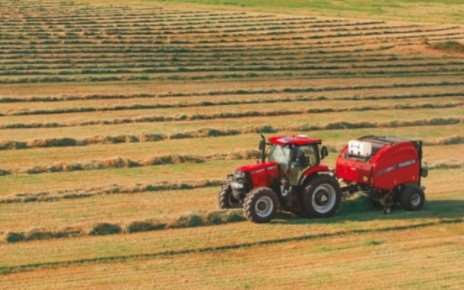
Whether you store your hay, feed it to livestock or sell it, you need the right tools to harvest at peak nutrition. DJ Wassenaar, owner of County Line Custom Farming in Jarvis, Ontario, uses Case IH equipment to improve alfalfa quality for his 150+ customers and reap the benefits of high-efficiency hay.
Here are three tips from Wassenaar for high-efficiency hay.
1. Choose the right tools
- Whether you’re due for a midseason upgrade or are already thinking ahead to next year, bolster your operation with an equipment upgrade. Wassenaar uses several Case IH products to give his operation an edge:
- LB series large square balers: For Wassenaar, the pickup is what makes the baler — and his LB334 models do not disappoint. “This is by far the best baler I’ve ever run,” said Wassenaar, who enjoys the benefits of less maintenance and reduced downtime. “The pickup ensures quick and consistent crop flow that results in better bales.”
- RB5 series round balers: Wide pickups, high-capacity feeding systems and durable belts and rolls consistently build dense, uniform bales — driving down the cost of handling. Heavy-duty pickups provide a clean sweep of crops and uninterrupted feeding. “Overall reliability on our Case IH balers is unbelievable,” Wassenaar said.
- Reliable tractors: Wassenaar can count on Maxxum® and Puma® tractors to keep his operation humming. “The Multi-Control Armrest and electrohydraulic joystick on our Puma CVT tractors put key controls right up front. This level of comfort reduces operator fatigue during long nights of bale wrapping and hauling,” Wassenaar said.
2. Tap into new technology
- For Wassenaar, using improved technology means getting more done with less fatigue.
- ISOBUS Class 3: Automated functionality provides two-way communication between the baler and tractor to optimize packaging, bale density, forage quality and bale consistency.
- Advanced Farming Systems (AFS) AccuGuide™ autoguidance: “We recently upgraded to AFS RTK-level autoguidance for our disc mower conditioner,” Wassenaar said. “The improved accuracy and efficiency will pay off not only on our first pass, but every pass thereafter.”
Click here to see more...